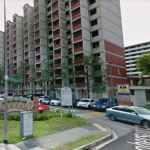A Quick Look at the Drawbacks of HDB Loans
By iCompareLoan Editorial Team
In the last article, I discussed about the pros of using a HDB loan. Here, we look at the opposite instead.
1. No saving left in your CPF (Central Provident Fund) Ordinary Account
Table of Contents
Before you are allowed to take a HDB loan, it is mandatory that all the balance (after setting aside an amount for the miscellaneous fees of the flat purchase) in your CPF Ordinary Account up to the valuation limit (the lower of the purchase price or valuation at the time of purchase) if applicable, be utilised first. After that, HDB will decide on the loan quantum based on the outstanding amount to be paid for the flat.
As the savings in the CPF Ordinary Account generate an interest, which has remained at 2.5% p.a. since July 1999, you lose this interest earning when you use the savings to pay for the flat.
However, you save on the interest payable for the HDB loan which is 0.1% above the interest rate for the Ordinary Account. In other words, the loan rate is 2.5% + 0.1% = 2.6% p.a..
Had you not utilised the savings in the CPF Ordinary Account, you would have to use the loan. The below illustrates the loss:
- CPF Ordinary Account Saving = S$50,000
- Interest earned at 2.5% p.a.= S$1,250
- Interest payable on loan at 2.6% p.a.= S$1,300
- Loss = S$1,300 – S$1,250 = S$50
Nevertheless, it is still possible than you would have been better off if the saving had remained in the Ordinary Account. Because the first S$60,000 in all the 3 CPF accounts (Ordinary, Special and Medisave) earns an additional 1% interest, with up to S$20,000 from the Ordinary account. So if you need to rely on the balances in your Ordinary account to make up the S$60,000, you forfeit this additional 1% of interest. The below is a simple illustration using the maximum amount of S$20,000 that can earns the additiona1 interest in the Ordinary account.
Loss from using your CPF balances instead of the HDB loan:
- Interest Rate Loss
= 3.5% (interest in CPF Ordinary Account) – 2.6% (interest on HDB loan)
= 0.9% p.a.
- Annual Loss
= 0.9% x S$20,000 = S$180
Further, when the flat is sold, all CPF saving used and interest that would have been accrued if the sum had remained in the account, will be deducted from the sales proceeds, and refunded to the Ordinary Account. This will reduce the cash proceeds which you may need for other purposes. Anyhow, if you had financed the flat with a loan (bank or HDB), you would still need to repay the outstanding loan amount from the sales proceeds.
Another drawback of depleting your CPF Ordinary Account savings is that in the event of a job loss there might not be adequate balance to service the monthly home loan repayment; hence you may be required to service it with cash.
A way to circumvent having to use the CPF Ordinary Account balances to pay for the flat is to invest it before you make the flat purchase. You can do so for the savings in excess of S$20,000 under the CPF Investment Scheme – Ordinary Account. Or instead you can transfer the monies in your Ordinary Account to the Special Account which interest rate has remained at 4% p.a from 2000 till now. This transfer is irreversible and there is a limit to it – the balance in the account (inclusive of the amount withdrawn under the CPF Investment Scheme for the Special Account) after the transfer cannot exceed the prevailing Minimum Sum. Once the monies are in the Special Account, you cannot utilise it for your housing purchases anymore.
2. Possibly relatively higher interest and opportunity cost
During a high interest-rate environment, a financing institution will, in all likelihood, offers a loan with a lower interest rate as compared to a HDB loan.
So the opportunity cost (best foregone alternative) for not using a private loan becomes higher. In addition, you also lose the 1% of additional interest on the savings (capped at S$20,000) in your CPF Ordinary account.
Whether you decide on a HDB loan or a bank loan, do bear in mind that you are not allowed to refinance to a HDB loan once you have taken a bank loan.
For advice on a new home loan.
For refinancing advice.
Download this article here.






